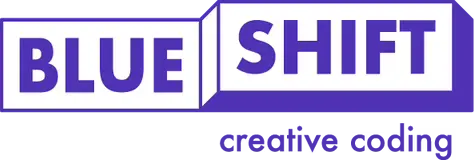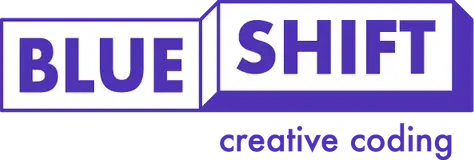Asking children to be ready, respectful, and safe
Hi, I’m Katie and I’m the camp manager for blue{shift} coding camps.
For me, helping children achieve their potential is something I am very passionate about. Indeed, I have grown up surrounded by education - my mother is a headteacher and I often volunteered at her school throughout my teenage years. More recently I worked with SEN children at a school in Hackney, before coming to blue{shift} to develop the provision of our holiday camps.
Not only do I want camps to be fun and engaging, but I want children to feel safe and secure. I also want to ensure that our parents and carers are confident that their child is being taken care of. That’s why I have used my educational experience to create our own unique blue{shift} behaviour management systems. These have been tailored to the age of our students as well as to the unique nature of our coding camps, and so I wanted to spend some time explaining what we do and why we do it.
For all of our students we take three simple premises and expand these: we want everyone at camp being ‘ready’, being ‘respectful’ and being ‘safe’. Being ‘ready’ is about being ready to learn - for instance listening to the teacher or sitting patiently for others to finish their work. Being ‘respectful’ includes being respectful of the teachers, but also of their classmates and other students at the camp. Finally, being ‘safe’ relates to all parts of camp, but specifically the use of the equipment and playtime - whether that’s being safe online, when playing football, or using something like glue guns. These three simple rules make it easy to communicate our expectations to each and every student... No matter how old they are, which school they attend, or where they are from.

Juniors - Aged 5 to 9
If your child is one of our younger students (between the ages of 5 and 9) then we view them as a ‘junior’ at blue{shift} camps. For each of our junior classes we have a behaviour management chart on the board in their classroom - front and center, from the get go. On the first day of camp, we explain the behaviour chart system to the students and ask them to write their name on a little character. From here, each day begins with every child starting on yellow. If a student shows a ‘ready’, ‘respectful’ or ‘safe’ behaviour they will be recognised for being a brilliantly behaved student and moved up a level to green. If this behaviour is consistent throughout the day, they will then be moved up to blue... Our highest level! Equally, if a child is not ‘ready’, ‘respectful’, or ‘safe’ they might be moved down from yellow to orange. If this behaviour persists they will be further moved down to the lowest level red.
Another important but simple premise—rewarding good behaviour and encouraging the change of bad behaviour—is key in our approach. Using classdojo, a communication and class management platform, we assign points to each student at the end of the day depending on their position on the chart. These are as follows:
- Blue: +5 points and a special gold sticker from the camp manager - me!
- Green: +3 points and a sticker from their class teacher
- Yellow: +1 point
- Orange: -2 points and their teacher will pull them aside for a chat to discuss their behaviour
- Red: -5 points and they are sent to speak to the camp manager (this might seem scary, but we always emphasise a child’s ability to make a change and improve the next day!)
As you can see, I give out small rewards in the form of stickers every day. However, we also want to reward consistent good behaviour across the whole week, which is why we’ve brought in our ‘blueshift star’ trophies! At our camp ceremonies on Fridays the child who has accumulated the highest amount of points in each class will receive a small blue{shift} star trophy to celebrate their excellent behaviour over their week at camp.
Having a visual representation of their behaviour allows children to see that they might need to rethink their actions, whilst rewards encourage them to do just this. And this is the beautiful thing about our behaviour charts: if a child makes a positive change, they will be moved up, no matter where they are on the chart or how they behaved earlier! Showing them that it’s never too late to make a change and end the day on a positive colour, when combined with rewards, is a very powerful way to change a child's approach to their behaviour. I’ve loved seeing ready, respectful and safe behaviour not only in the classrooms but also in the lunch hall and playground!

Seniors - Aged 10+
If your child is age 10 or above we consider them a ‘senior’ at our camps. It was important, for a number of reasons, that we split our classes and offer a different service for our younger and older classes. This split was particularly prevalent when it came to managing the classes themselves; as a result, we have two different (but similar!) approaches to managing our students behaviour at camp.
Whilst younger students often benefit from clarity, structure, and simple rules, for older children this can come across as patronising and childish. It is our intention, then, that by giving these older children more freedom and treating them like adults we create a foundation of respect between our senior students and our teachers. As part of this, we give our older students more opportunities to make their own decisions. For instance, when they are not in class they are given their own room where they can choose how they want to spend their time - whether that’s hanging out and playing some classic video console games, reading a magazine, or simply finishing some of their code. We have separated the junior and senior students when they eat lunch and take breaks, offering older students the chance to go outside every hour so that if they need a bit of fresh air or fancy a game of football to clear the synapses they can.
Much like with the junior students we still look to reward good behaviour from our seniors. However, this is less structured: seniors are still reminded of our ready, respectful and safe behaviour rules and teachers will reward this behaviour with positive feedback throughout the week, but they are not constrained by charts or points. Instead, each teacher is given a special prize to give out to the student they believe has been the best behaved over the week at their in-class graduation ceremony! Of course, this isn’t always enough in and of itself. As such, if a senior student is not showing good behaviour, a teacher will first give them a simple verbal reminder; if this behaviour persists they will be pulled to the side for a quick chat about making a change. If this senior continues to show unproductive behaviour, like the junior students, they will have a chat with the camp manager and their parents will be notified. Currently at the time of writing, however, I’m pleased to say that we’ve yet to reach this point with any of our students!
All of this is intended to balance traditional behaviour management techniques with the increasing maturity and responsibility of our students. We want our seniors to know that we respect and trust them to behave - and to achieve this we treat them as young adults, rather than children.
Want to know more about our behaviour management system or our holiday coding camps? Contact us at hello@blueshiftcoding.com.






